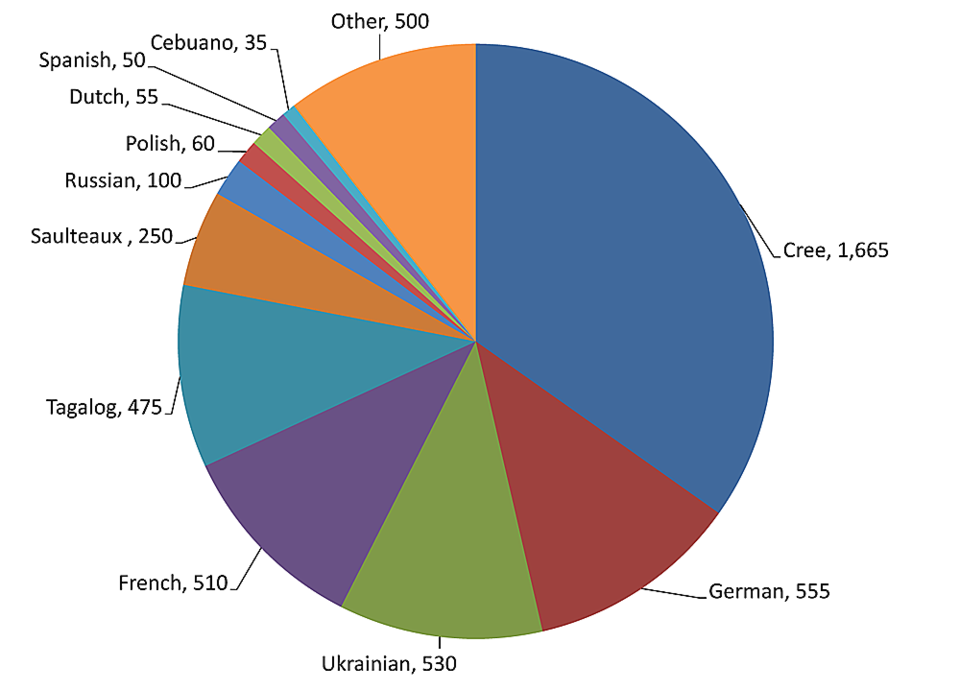If someone’s mother tongue isn’t English in the Northeast, it’s most likely to be Cree. Yet Tagalog, the Philippines’ national language, is growing at a rapid rate.
According to 2016 Census data released Aug. 2, 30,515 people speak English in census division 14, which goes from Melfort in the west, the Manitoba border in the east, slightly past Tobin Lake in the north and Kelvington in the south.
There are 1,665 that speak Cree as their mother tongue, down 415 since 2011.
German, with 555 speakers; Ukrainian, with 530; and French, with 510 are the next largest languages in the Northeast. Those languages have lost 120, 100 and 170 speakers respectively since 2011.
Tagalog, the sixth-largest language, has 475 speakers, an increase of 330.
Anja Kapeller, with the Northeast Newcomer Services out of Tisdale, said her organization finds that most of their clients come from the Philippines.
Second languages different in each of the big three
When it comes to the three largest communities in the Northeast, the only similarity when it comes to mother languages is that English is the largest.
Melfort has 5,180 people that count English as their mother tongue. Tagalog is the second largest, with 220 people – an increase of 190. Ukrainian is the third, with 90.
The second language of Nipawin is Cree, with 145 speakers, a increase of 55. Tagalog is the third largest, with 80 people, a increase of 50. There are 3,715 people that count English as their mother tongue.
Ukrainian is Tisdale’s second largest mother tongue, with 65 speakers. French is third, with 60, and Tagalog is fourth, with 55 – an increase of 35. There are 2,805 that count English as their mother tongue.
Top 10 languages
| 1 | English | 30,515 |
| 2 | Cree | 1,665 |
| 3 | German | 555 |
| 4 | Ukrainian | 530 |
| 5 | French | 510 |
| 6 | Tagalog | 475 |
| 7 | Saulteaux | 250 |
| 8 | Russian | 100 |
| 9 | Polish | 60 |
| 10 | Dutch | 55 |




